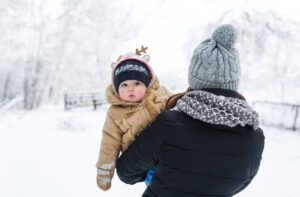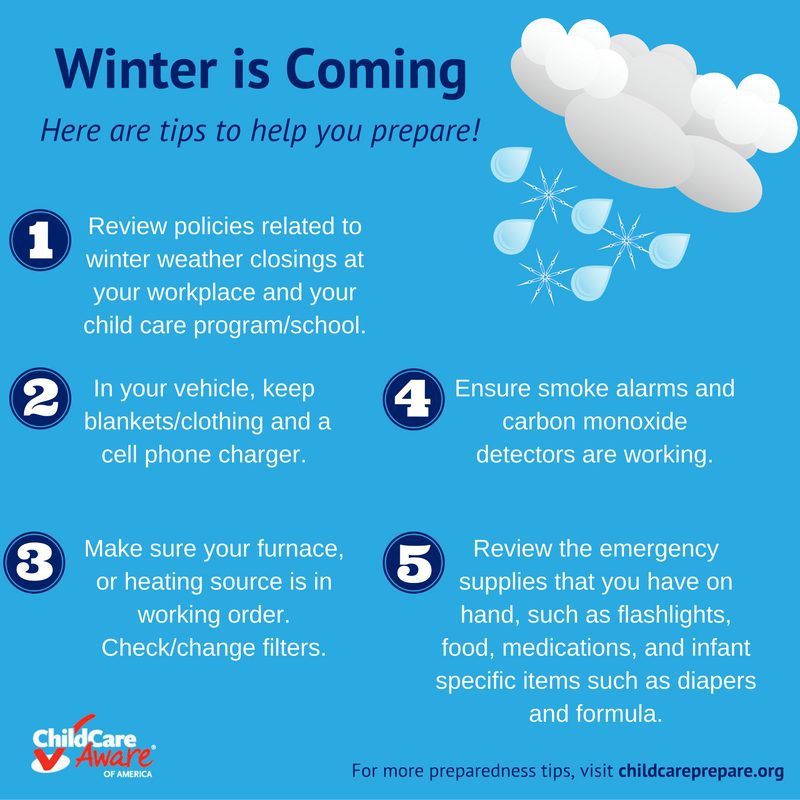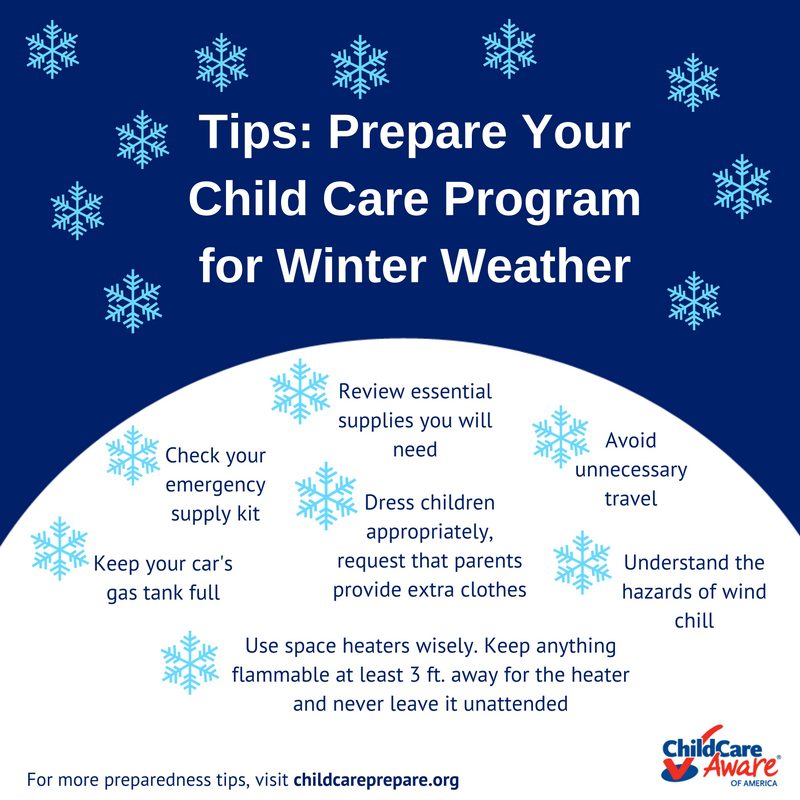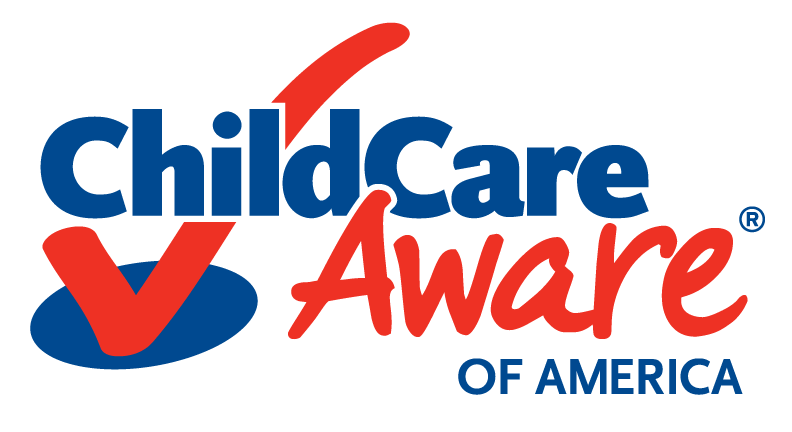Children are not able to regulate their body temperature as well as adults. When they are exposed to extreme cold, they can quickly develop a dangerously low body temperature.
Winter Weather
Here are a few tips to prepare child care facilities:

- If you are planning to provide services during winter weather, consider asking parents to provide extra supplies (diapers, infant formula/food, medication) and clothing for children.
- Make sure you have your emergency supply kit
- Trim back branches that may cause damage and/or lead to a power outage.
- Prepare for possible power outage. Keep batteries, flashlights, blankets, etc.
- Fill your vehicle’s gas tank.
- Review policies and procedures regarding communication with staff, children,and parents.
- Review policies and procedures governing suspending, delaying, relocating, or canceling operations due to weather and/or power outages.
- Check to make sure your furnace or other heating source is in good operating order.
- Check smoke detectors to make sure they are operating properly.


Extreme Cold
While it is important for children to spend time outside each day, there may be periods of extreme cold where extra precautions must be taken to make sure the children in your care are safe. Consult your state’s requirements about cold weather to be sure you are in compliance.
It is important that children are dressed appropriately for cold weather. Pay extra attention to the areas that can most easily be impacted by frostbite: hands, feet, and the head. Also make sure the clothing is dry and children are dressed in layers.
Other Resources
- Snowstorms & Extreme Cold (Ready.gov)
- How to Prepare for a Winter Storm (FEMA)
- Winter Weather (Centers for Disease Control and Prevention)
- Winter Weather Resources (The National Child Traumatic Stress Network)
- Extreme Temperatures: Heat and Cold (American Academy of Pediatrics)
- Winter Car Seat Safety Tips from the AAP (American Academy of Pediatrics)
- Ready Wrigley (CDC.gov)



